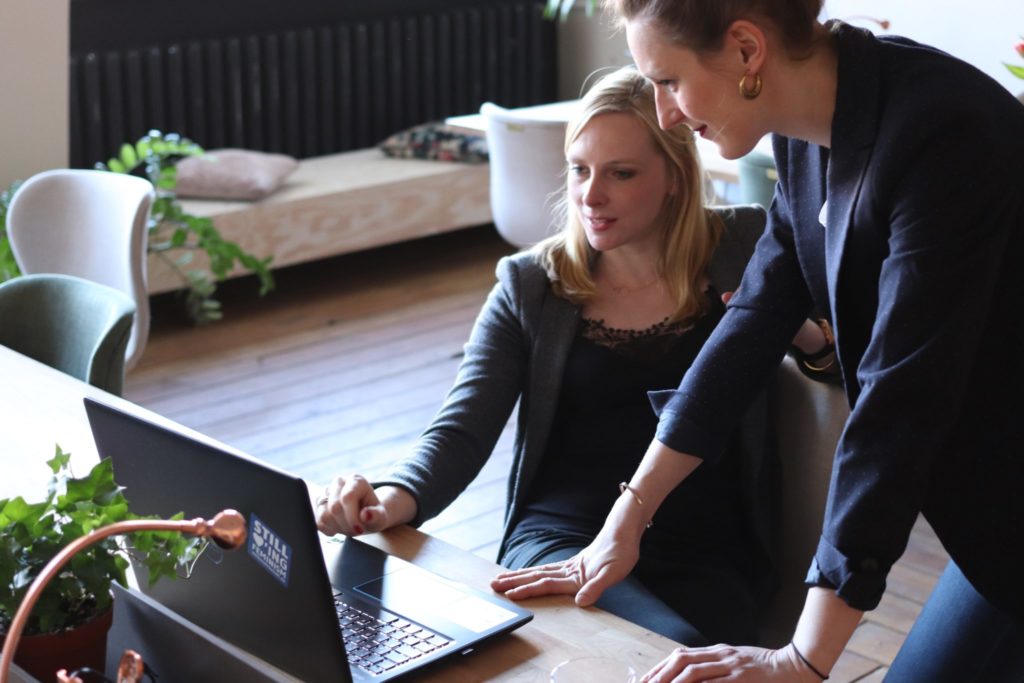Licensed interior designer, workplace strategist, and GWA board member Mara Hauser is the founder and CEO of both Workplace Studio and 25N Coworking, meaning she’s worked on both the design side and the space owner and operator side of design. Although every design team works a bit differently, Hauser had a few pointers for your first (or fifth) meeting with a new design team.
(Try to) Know What You Want
Hauser said it’s not uncommon for a team to work with you from before you sign a lease all the way until move-in, depending on your budget and what sorts of services you’re looking for. For example, Workplace Studio offers a number of different packages, from design concept and storyboarding to test fits, test flows, and revitalization packages.
A good design team will take the time to understand your brand and the culture that you’ve either already created or are aiming to create, and they’ll work from there.
“Once we get an understanding of that… we go back with storyboards to present how the culture and the brand reflect into the interior,” Hauser said.
Come Prepared
Hauser also gave a list of information to bring with to a design meeting that can help give the team the clearest idea possible:
- Your brand and who you want to serve (from business plan)
- Business/brand strategy
- Events you plan to have
- Type of environment you want to create
- Pinterest board
- Predefined budget for furniture and design
- List of design components you’d like to be able to change up, how often, and plans for scale
- Vendors you already have in place
- What worked (or didn’t) in your existing space, if applicable
Hauser also said that, while coming in with ideas from other spaces is fine, the design team will likely be more interested in other parts of your style—what stores you shop at, what hotel brand you like, what type of car you prefer to drive. She said this information is likely to give them more insight into what type of space fits you and your approach, which will help them understand and design for your unique brand, not someone else’s.
“We don’t want to design that coworking space for you, because that’s not your coworking space,” she said. If you really liked another brand’s space, it’s more helpful to come in with thoughts on why you liked it. What made you feel comfortable? What specific parts of the design were you drawn to?
Hauser also encouraged owners and operators to be realistic about their budgets. “On a scale of 1 to 10, 10 being the highest price and 1 being the lowest, where do you see yourself falling?” she’ll often ask, she said—and she wants to know what you want to look like. If a designer knows what your budget is and what you want to look like, it’s often possible to make choices that can make a level 5 budget look more like a level 8.
Choosing a Design Team
Hauser recommends looking for a design team that specializes in coworking and/or some combination of experience in hospitality, education, and event space. She said that you’ll often be introduced to a liaison initially, but that it’s important to get to know the people who would be on your design team from start to finish. She said to think of this process as hiring an employee—you have to get along, understand each other, and feel like the right fit.
This also extends to an understanding of coworking. Have the people who will be on your actual design team actually worked out of a coworking space at all, or have they just visited a space? Obviously, these two scenarios will produce two very different understandings of coworking—and that can show up in your design.
You might also ask about their connections to your geographic area and understanding of its needs, as well as about local partnerships. Some design teams have architects and other contractors they work with, but even if you’re the one finding these other team members, designers will need to be able to collaborate effectively.
Design for the End Goal
Hauser said the biggest mistakes in design often come from not thinking far enough ahead. Many space owners and operators will try to either do too much themselves in an effort to save money (which often costs more in the long run) or will over-complicate the process and end up with an inflexible design that either can’t be updated or doesn’t work for day-to-day operations. Regardless of where you are in the design process or how much experience you have with it, be sure to keep an open mind, and make sure you find a good design team that you can collaborate with and rely on to create a welcoming, functional atmosphere for your space, your members, and your unique brand.




